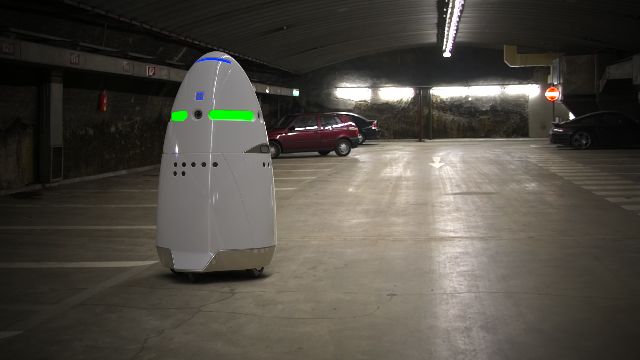One of the key themes of this site is how industries and workplaces are changing, one good example of this is Knightscope’s K-5 robot, a refrigerator sized device that does many of the tasks currently done by human security guards.
The K-5 comes with an impressive list of security features; live video, facial recognition, behavioral analysis and a range of other tools to help organisations protect their premises.
With an advertised running cost of $6.25 an hour, half the US mean average wage for security guards, the robots appear an attractive proposition although one suspects the limitations of the devices, not to mention the networking infrastructure involved, won’t make them feasible for most places in the near future.
Despite its limitations, the K-5 shows the direction of robot technologies in replacing jobs that until recently were thought to be immune to automation. As the technologies inside the K-5 become smaller and lighter, future devices will become even more flexible and adaptable.
Adding to the strengths of these autonomous devices is their constant connectivity, as the promotional video shows the robot uses cloud services to run its recognition and alarm services. Coupled with various sensors and beacons within a building, and these robot security guards become formidable devices.
The applications for devices like the K-5 goes beyond patrolling shopping centres, car parks or industrial complexes; it’s not hard to see how similar devices can be deployed in applications like agriculture, mining or manufacturing for tasks where it would be expensive or dangerous to employ humans.
What the K-5 illustrates Andrew McAfee’s warning of exponential technological change being about to engulf businesses, the employment implications of that should have community leaders thinking as well.
For entrepreneurs, on the other hand, advances in robotics are another great opportunity.

Leave a Reply